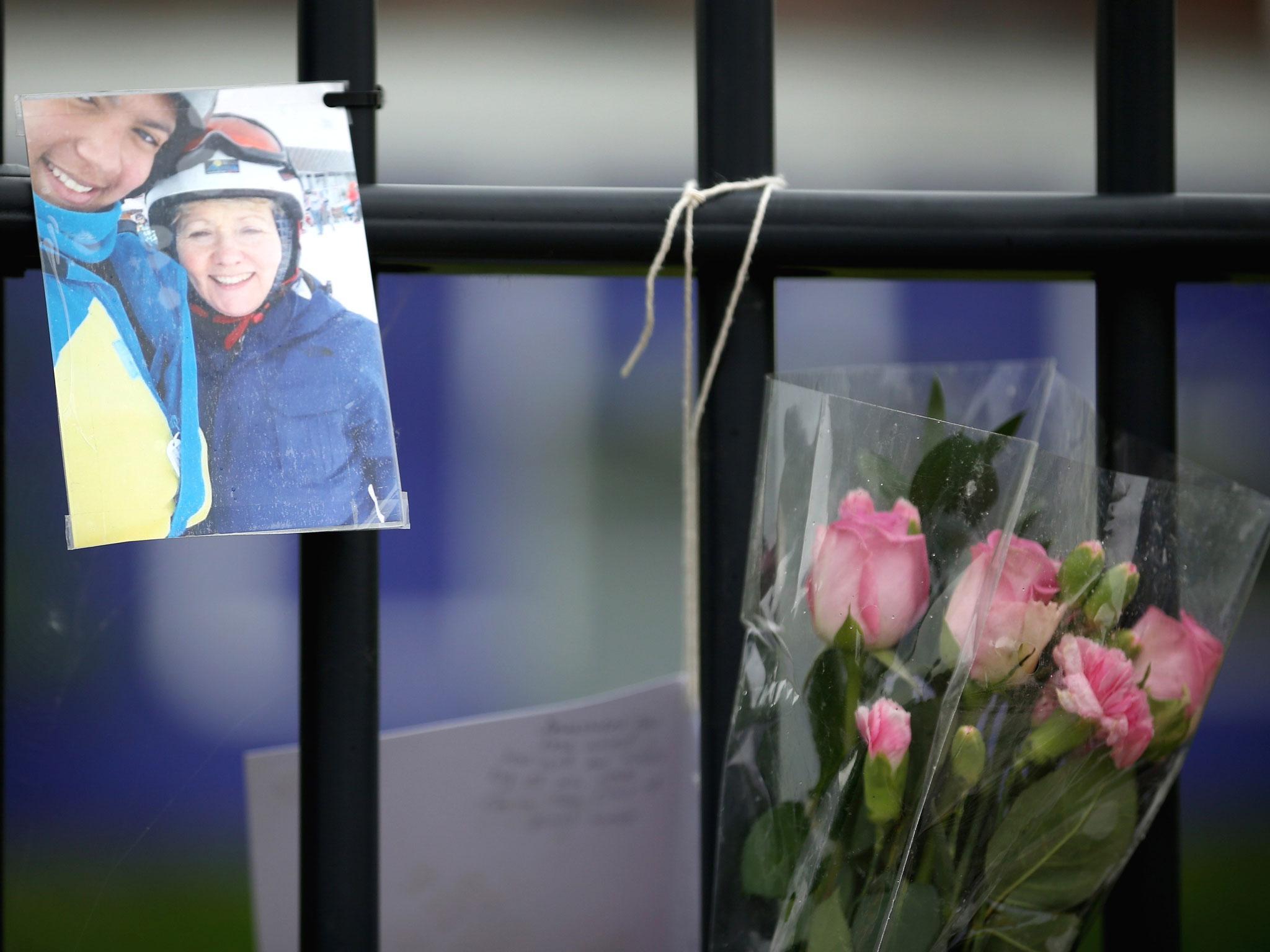After the death of Ann Maguire, should parents be given the right to monitor their children's social media?
For months before the attack, William Cornick had issued death threats on social media, and yet nobody raised the alarm


Your support helps us to tell the story
From reproductive rights to climate change to Big Tech, The Independent is on the ground when the story is developing. Whether it's investigating the financials of Elon Musk's pro-Trump PAC or producing our latest documentary, 'The A Word', which shines a light on the American women fighting for reproductive rights, we know how important it is to parse out the facts from the messaging.
At such a critical moment in US history, we need reporters on the ground. Your donation allows us to keep sending journalists to speak to both sides of the story.
The Independent is trusted by Americans across the entire political spectrum. And unlike many other quality news outlets, we choose not to lock Americans out of our reporting and analysis with paywalls. We believe quality journalism should be available to everyone, paid for by those who can afford it.
Your support makes all the difference.William Cornick was 15 years old when he announced on Facebook his intention to kill Ann Maguire, a well-respected teacher at his school in Leeds. Cornick even offered a Facebook friend £10 to do the job for him, claiming “I want… to axe her f*****g cockles with a long and shiny blade.”
A few weeks later, one April morning in 2014, Cornick arrived at school and told 10 of his fellow students he intended to carry out his threat. He revealed the 13-inch knife he was carrying, and threatened to attack two other teachers. A short while later, in the middle of a lesson, Anne Maguire was stabbed to death.
Cornick is now serving a 20-year minimum sentence, after pleading guilty at his trial. Two lives lost and a lot of questions unanswered.
None of the teenagers who encountered Maguire that day or had read his rants on Facebook over the preceding weeks reported their concerns to anyone – not to the staff, certainly not to their parents, or to the police – and, astonishingly, they have not been asked why. It was decided by the authorities concerned that the students should “not feel responsible”.
At the inquest into Ann Maguire’s death, communications between all the parties involved were described as “inadequate”. That is a huge understatement. For months before the attack, Cornick had issued death threats on social media, and yet nobody raised the alarm and none of his posts resulted in him being blocked by friends.
Some teenagers were undoubtedly scared of reprisals. After all, they had to attend school with a deeply troubled young man who carried a knife. And it would never have occurred to most of them to tell their parents, because today’s young people live a parallel existence to the rest of us, an online world where threats and sexual content are passed freely around, where you can be forced to expose yourself and submit to bullies routinely.
One in five young people spend more than four hours a day online, but only 40 per cent of parents impose any restraints on their children’s use of social media. By the time they arrive at secondary school, 90 per cent have smartphones and communicate in ways parents know very little about.
Following the inquest into Ann Maguire’s death, the coroner called for parents to have the legal right to access and regulate their children’s social media. He demanded that Facebook, Instagram and Snapchat do more to help parents monitor children’s usage, stating that mental wellbeing was more important than entitlement to privacy.
Unfortunately, the chances of this happening are nonexistent. This week, the Children’s Commissioner for England, Anne Longfield, revealed that YouTube repeatedly fails to spot sexualised comments posted from predators viewing innocent children’s videos. She claimed that YouTube’s self-policing system, which uses algorithms and “trusted flaggers” – unpaid monitors who comprise charities, law enforcement agencies and individuals – has not been functioning properly for at least a year.
When “flaggers” send in reports highlighting questionable postings, often the links to those users are lost or not acted upon. The BBC easily found 28 examples of disgusting comments requesting phone numbers and nudity in response to children’s imagery, and “flaggers” estimate there are at least 100,000 predators regularly leaving unacceptable comments on YouTube. Apparently using words like “kill” does not flag up as a concern, because we frequently say “I could kill” for something as mundane as a drink.
Relying on other Facebook users to report unacceptable content is never going to wash out the filth and sexual content, because of the sheer volume of stuff posted every single minute. As for monitoring your child’s social media, you could instal the Google Family link, which allows parents to approve and block apps, set time limits and gather activity reports – but testers have found that the filters “aren’t perfect” and once your child is 13, they will be bombarded with aggressive advertising anyway.
As for privacy, that is a concept we have already given up by stealth once we use any modern mobile phone. Google is tracking our phones even when we turn off the location services app and remove the SIM card.
Since the beginning of 2017, Google has been recording the location of the nearest mobile phone mast and sending the information back to Google. What for? Now the company say they will no longer continue to monitor our movements, but what were they doing with the data in the first place?
Recently it has emerged that apps aimed at teenagers revealed their exact whereabouts to “friends” without their knowledge or approval, making it easy for predators to access their neighbourhood.
Children do not seem to value privacy the way that my generation did, but the Cormick case shows that they may also feel powerless to change the climate of routine bullying on social media, and that they find it hard to differentiate between a boast and a real intention to harm.
The only way to help is through education, both at home and school. Surely it’s up to parents to be parents – to get together in groups and limit online usage, to only give their children simple basic phones, and to monitor every website they visit. Some of the young people at Cormick’s school were so frightened they felt there was no one they could tell. That’s a lesson for parents and teachers.
Join our commenting forum
Join thought-provoking conversations, follow other Independent readers and see their replies
Comments